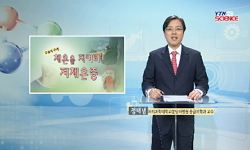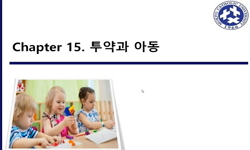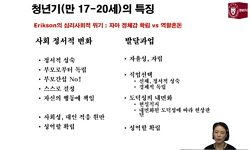본 연구는 고온 환경(38~40도)에서 운동 중 체수분보충훈련이 체수분 균형과 체온 반응에 미치는 영향을 규명하여, 더위에서 장시간 운동 시 수분섭취 권장에 대한 기초 자료를 제시하는데 그...
http://chineseinput.net/에서 pinyin(병음)방식으로 중국어를 변환할 수 있습니다.
변환된 중국어를 복사하여 사용하시면 됩니다.
- 中文 을 입력하시려면 zhongwen을 입력하시고 space를누르시면됩니다.
- 北京 을 입력하시려면 beijing을 입력하시고 space를 누르시면 됩니다.
고온환경에서 훈련 중의 수분섭취가 체수분 균형과 체온 반응에 미치는 영향 = Effects of Active Habitual Rehydration during Training on Body Fluid Balance and Thermoregulatory Responses during Exercise in Hot Environment
한글로보기https://www.riss.kr/link?id=T11444737
- 저자
-
발행사항
서울 : 국민대학교 대학원, 2008
-
학위논문사항
학위논문(석사) -- 국민대학교 대학원 , 체육학과 운동생리학전공 , 2008. 8
-
발행연도
2008
-
작성언어
한국어
- 주제어
-
발행국(도시)
서울
-
형태사항
vi, 62 p. ; 26cm
-
일반주기명
지도교수 :이대택
- 소장기관
-
0
상세조회 -
0
다운로드
부가정보
국문 초록 (Abstract)
본 연구는 고온 환경(38~40도)에서 운동 중 체수분보충훈련이 체수분 균형과 체온 반응에 미치는 영향을 규명하여, 더위에서 장시간 운동 시 수분섭취 권장에 대한 기초 자료를 제시하는데 그 목적이 있다.
본 연구에 참여한 피험자들은 대사기능과 더위 관련 질병력이 없는 건강한 남자 대학생 8명으로서, 특정 운동프로그램에 참여하지 않았고 실험 전 더위적응과정이 없었다.
피험자들은 충분한 수분섭취 조건(Active Rehydration Condition;ARC)과 불충분한 수분섭취 조건(Passive Rehydration Condition;PRC)의 수분섭취훈련을 7일간 총2회 수행하였고, 각 수분섭취훈련 전?후에 이루어진 사전?사후검사도 모두 수행하였다. ARC?PRC의 수분섭취훈련 사이에는 3주간의 Wash-out 기간이 있었으며 훈련의 적응으로 나타나는 영향을 고려하여 훈련의 순서는 무선으로 선정하였다. 수분섭취훈련은 90분간 60~70% VO2max의 운동 강도로 트레드밀에서 달리기를 하며 체수분손실량의 1.5배의 수분을 섭취하는 ARC와 0.5배의 수분을 섭취하는 PRC로 나뉘어 진행되었다.
ARC와 PRC의 훈련을 통한 체수분 균형의 차이를 알아보기 위해 체중, 뇨비중, 뇨삼투, 혈청삼투, 헤모글로빈, 헤마토크릿, 총단백질을 검사하였고, 체온반응은 심부온과 피부온을 측정하였다. 운동수행능력은 RPE, 목마름척도, 더위척도로 측정하였다. 모든 자료는 평균과 표준편차를 산출하였으며, with in subjects Factorial ANOVA with repeated measure 통계를 사용하였다. ARC와 PRC 조건의 수분섭취훈련으로 나타나는 사전?사후검사를 비교 분석한 결과 체수분 균형을 알아본 모든 변인들에서 통계적으로 유의한 차이는 없었고, 체온 반응에도 유의한 영향을 미치지 못했다. 운동수행능력을 측정한 결과 ARC의 수분섭취훈련이 PRC의 수분섭취훈련 보다 수치가 다소 감소하는 경향을 보였지만 조건*시기*시간 간의 통계적으로 유의한 차이는 없었다.
본 연구에서 진행된 고온환경에서의 수분보충훈련은 인체의 체수분 조절에 주요한 요인으로 작용하지 않은 것으로 사료된다. 이는 인체가 극단적인 상황에서도 항상성을 유지하려는 본질적인 생리적 성향과 관계가 있으며, 특히 체수분 조절은 개인의 컨디션이나 개인의 생리적 변화의 폭에 따라 그 범위가 매우 넓기 때문일 것이다.
다국어 초록 (Multilingual Abstract)
This study examined the effects of an habitual hydration maneuver during exercise training in a hot environment (38-40 C) at 60-70% VOzm. for 90 min on body fluid balance and thermoregulatory responses, and intended to provide informations related to ...
This study examined the effects of an habitual hydration maneuver during exercise training in a hot environment (38-40 C) at 60-70% VOzm. for 90 min on body fluid balance and thermoregulatory responses, and intended to provide informations related to rehydration strategies while exercising in heat for long duration.
Eight healthy collegiate men who had not experienced any heat related diseases and were not know for metabolic diseases were recruited. They were not in a regular exercise program prior to the study. All subjects underwent two experimental conditions; active rehydration condition (ARC) and passive rehydration condition (PRC). Each condition of experiment was designed in three phases; pre-testing, a 7-day training program, and post-testing. Two conditions were separated by a 3-week wash-out period. The order of experiments were randomly selected and balanced, For the ARC, each subject actively consumed fluid during exercise training, and for the PRC, they restriced fluid consumption during the training sessions.
During the tests, body weight, urine specific gravity, urine osmolality, plasma osmolality, hemoglobin, hematocrit, total protein were analyed for fluid balance status and the core and skin temperatures were monitored. In additiion, ratio of perceived exertion and thirst sensation were evaluated. All values were reported in mean and standard deviation and the Factorial ANOVA with repeated measure was employed to test three factors (condition, period, and time).
For the fluid balance parameters and thermoregulatory responses, no differences were found between pre- and post-test in both ARC and PRC. Although the perception during exercise tended to be lower in ARC than PRC, there were no statistical significances.
Based on the results, the habitual rehydration maneuver while exercise training in heat did not modify the major fluid balance responses. It is considered that human can maintain a body fluid homeostasis even at a strenuous condition without sufficient fluid supplements. It has to be noted that the control of body fluid balance can be widely varied by an individual physiological adjustment.
목차 (Table of Contents)
- Ⅰ. 서론 = 1
- 1. 연구의 필요성 = 1
- 2. 연구목적 = 4
- 3. 연구문제 = 4
- 4. 연구의 제한점 = 5
- Ⅰ. 서론 = 1
- 1. 연구의 필요성 = 1
- 2. 연구목적 = 4
- 3. 연구문제 = 4
- 4. 연구의 제한점 = 5
- 5. 용어의 정의 = 6
- Ⅱ. 이론적 배경 = 8
- 1. 고온환경에서 운동 중 생리적 변화 = 8
- 2. 고온환경에서 운동 중 수분섭취 = 12
- Ⅲ. 연구방법 = 16
- 1. 연구대상 = 16
- 2. 연구절차 = 18
- 3. 측정 항목 및 측정 방법 = 23
- 4. 측정기기 = 28
- 5. 자료처리 = 29
- Ⅳ. 결과 및 논의 = 30
- 1. 체수분 균형 = 30
- 2. 체온 반응 = 40
- 3. 운동수행능력 = 43
- 4. 수분섭취량 = 46
- Ⅴ. 결론 및 제언 = 49
- Ⅵ. 참고문헌 = 52
- Abstract = 61












